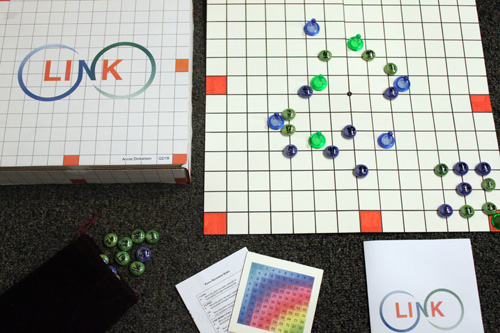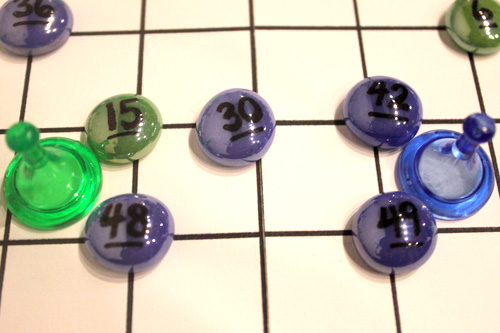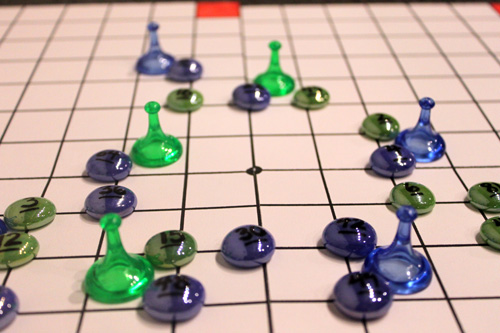Most people who know me well are privy to my love of math and logic puzzles. I do sudoku puzzles in my spare time and take huge books of logic puzzles with me on long flights. So when it was time to design a board game, what did I do? You guessed it – a math game.

Math was by far my favorite subject to teach during my years in the classroom. Math is built on a framework of simple rules that anyone can grasp. Throw in a little practice, and you’ll be a math whiz in no time. I had students who started the year barely able to multiply 2×2. By the end, most were able to recite the times tables through 9 and complete fairly complicated long division problems.
Now, one thing you should know is that I didn’t set out to create an educational board game. Sure, I came to VFS to study game design in an effort to eventually create educational games, but I didn’t feel the need to combine gaming and education right away. However, it caught up with me anyway.
I started out with an idea involving dice. You roll the dice, then mark a multiple of that number on a grid in an effort to get five numbers in a row. That got boring pretty fast.
Next, I went a completely different route. I tried to come up with a spider web game in which players build webs and then set traps for each other while trying to capture prey. That one was a little too complicated to get just right.
After being stuck for a few days, I had an aha moment: combine the two ideas by using numbers to build webs. The result was a game in which you create connections between numbers based on shared factors. Each link allowed you to move one space along a track around the board.
Not bad, but the movement and numbers seemed too separate for me, so I decided to combine the two. The result? LINK!
The objective of LINK is simple. You control 4 pawns that start near the center of a grid. You must get all of your pawns to orange safety zones around the board before your opponent does. But how do you move your pawns? That’s where the math comes in.
To move pawns, you must create links. In this game, a link is a connection between two numbers based on shared factors. For example, the numbers 42 and 49 could create a link because they share the factor of 7.
Each turn, you draw a number and place it on the board. The number could be of your color or your opponent’s color; you must play it regardless. Your pawns can’t move through links created by your opponent’s color, so you must be strategic about placement.
The number of links you create on a given turn determines your movement privileges. One link allows you to move vertically or horizontally, and two or more links allows you to move diagonally.
The game ends when one player has moved all his/her pawns to safety zones. Interested in playing? Joe’s currently working on a digital version, so hopefully it’ll be available soon!




